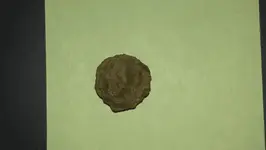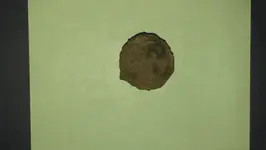They are animal-chewed bullets and musketballs. Animals chew them because lead tastes sweet, not because of scent. (The ancient Romans are notorious for using lead to sweeten wine -- you can look that up.) The subject of these so-called "pain bullets" (or, "hospital bullets") has been medically and historically researched, and debunked as myth.
1- The human jaw does not possess enough "bite-strength/bite-force" to mangle a large-caliber bullet like we see in Hosensack's photo. Do a google-search for "bite strength" or "bite force" comparisons of animals and humans.
Also, human teeth break if you use enough force to mangle a large-caliber bullet. Ask your dentist about broken teeth from biting down too hard on a solid object.
2- Even more importantly, we have not seen anybody report finding even a SINGLE historical documentation of soldiers being given a bullet to bite on during surgery. No report of such a procedure has turned up in historical Medical Literature. However, doctors WILL tell you that the last thing you want to do is put a small TOXIC swallow-able object in a patient's mouth during agonizing surgery.
3- We have not seen even a SINGLE report of the use of a so-called "pain bullet" in historical Military reports (such as the 128-volumes "War Of the Rebellion: Official Records Of The Union And Confederate Armies"). We relic-diggers have found many thousands of chewed bullets. If those thousands are truly "pain bullets," why does there not seem to be even a SINGLE report of their use in actual Military documents?
4- How do you explain the large numbers of so-called "pain bullets" turning up in farmers' hog-lots... and (especially) turning up in areas of the country where there never has been any military combat surgery?
Also, please read the article at the link below, written by a well-credential civil war Military Medical researcher:
http://www.ebay.com/gds/HOSPITAL-or-PAIN-BULLETS-/10000000004424188/g.html




